‘Kind of incredible’: Researchers uncover details about ice age wolf pup found in Yukon
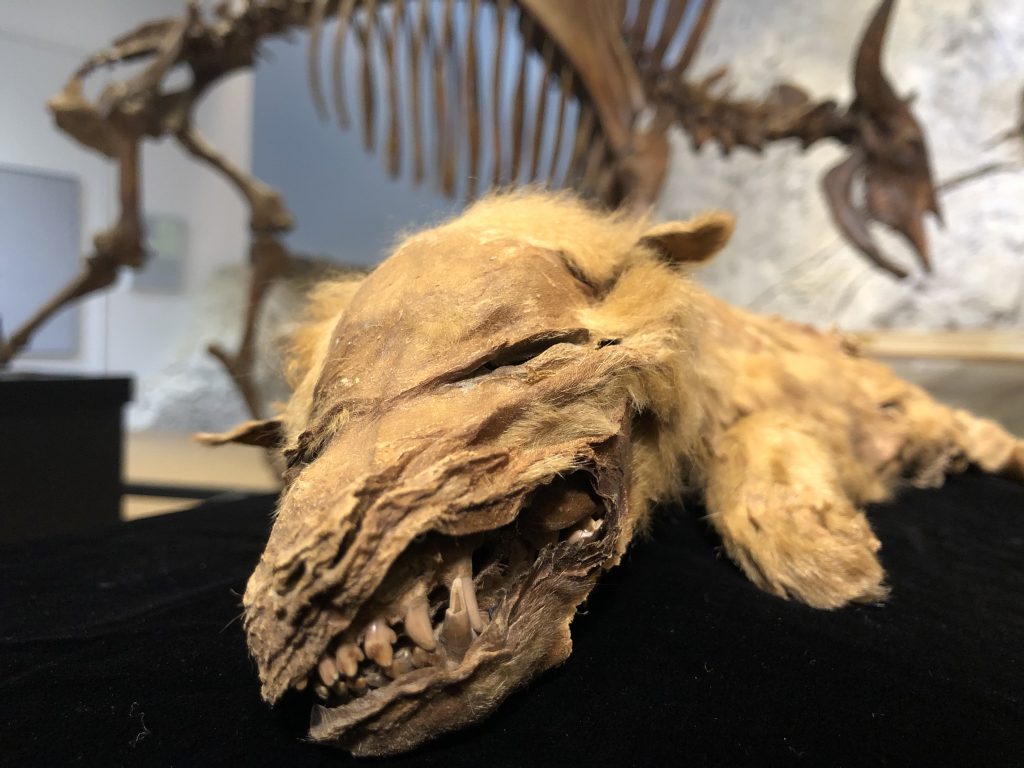
Scientists who have been studying a rare, perfectly-preserved ancient wolf pup found in Yukon are sharing some of their findings for the first time.
The 57,000-year-old animal, discovered in the goldfields of Yukon in 2016, is the most complete mummified grey wolf of its era ever found.
“She’s just so complete. She’s so amazing. She’s so intact. I mean she even has her fur, everything is there,” said Julie Meachen, a vertebrate paleontologist from Des Moines University and lead author of the new study published this month in the journal Current Biology.
The researchers were amazed to discover even the pup’s internal organs were intact.
“We can just learn so much more from an animal with skin and fur and organs than we can with just bones. There’s just so much details about her. And she lived 57,000 years ago — I mean this is kind of incredible, that we can get all this details from her when she lived so long ago.”
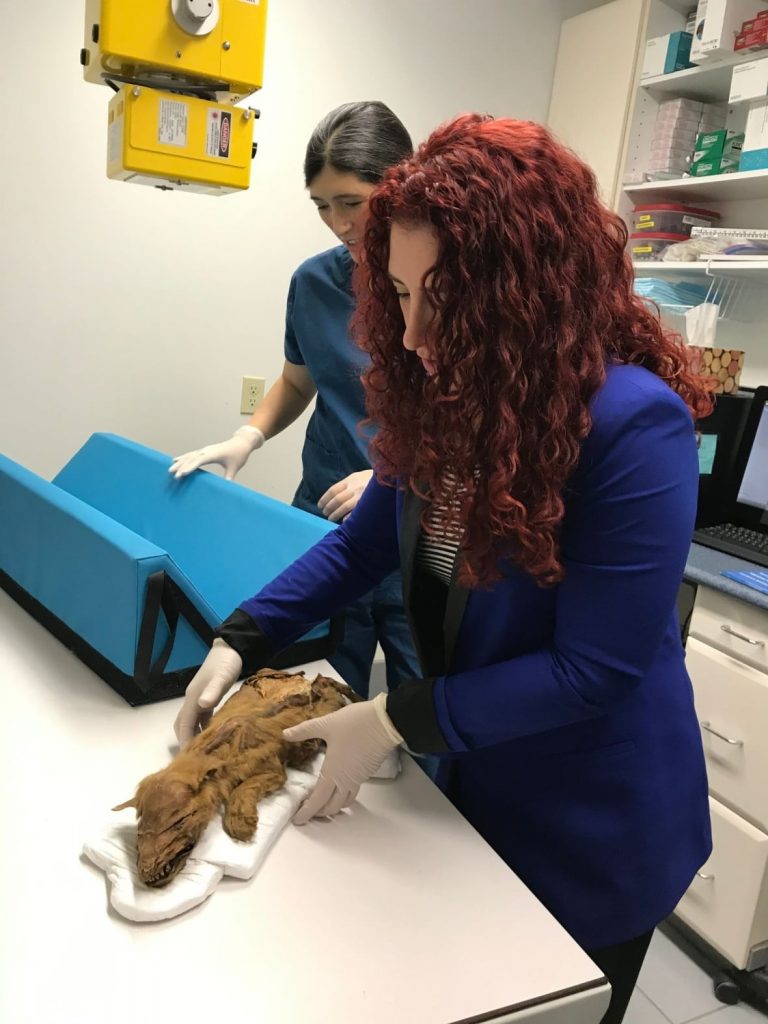
Through a variety of testing and analysis, the team of researchers was able to determine the pup — named Zhùr, which means “wolf” in the local Indigenous Hän language — was just seven weeks old when she died in her den.
Genetic testing also revealed she is not related to wolves found in North America today.
“We learned she is very closely related to ice age wolves in Europe,” says Yukon paleontologist Grant Zazula.
“And that’s really interesting because that tells us that there was a major population change that happened in North America with grey wolves at the end of the ice age.”
The scientists say they were most surprised to discover something about the diet of the little wolf. The animal’s last meal wasn’t bison or caribou or muskox as they had expected for the little carnivore — it was fish.
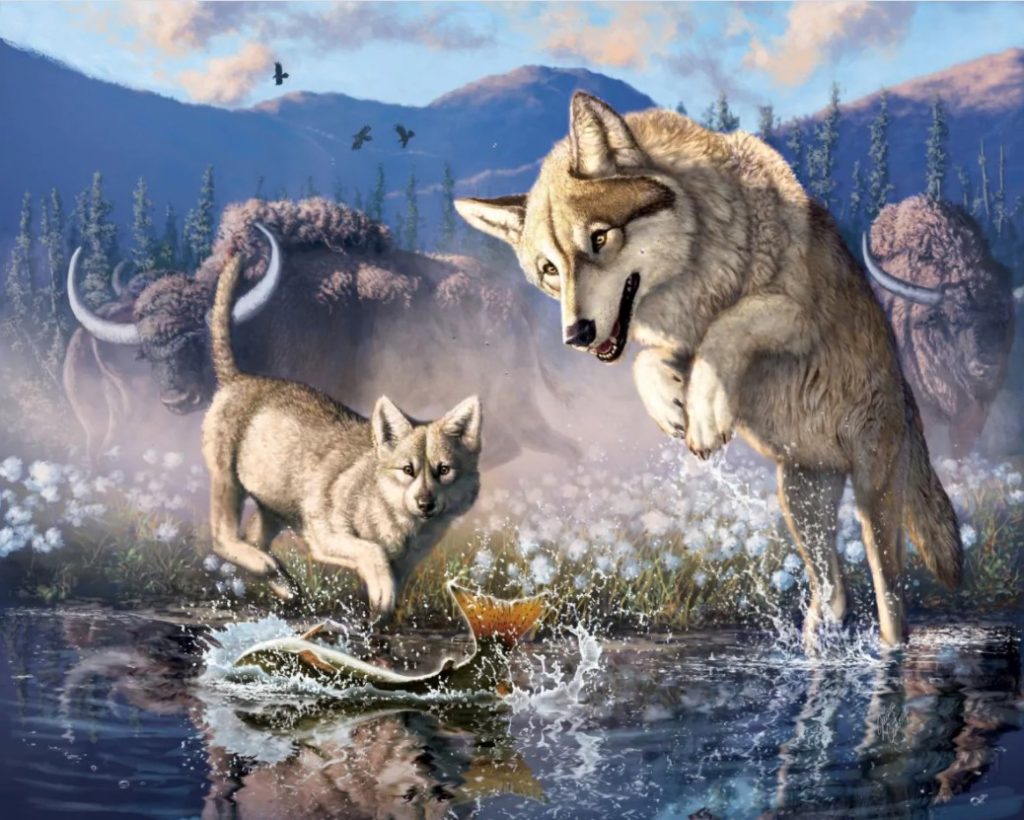
“Based on the analysis of chemical components in her hair and other tissues, we were able to determine what her last meal was,” says Zazula.
He says looking at things like the ratio of carbon and nitrogen preserved in the tissue, it was clear the pup was eating aquatic species, mostly likely salmon.
Culturally significant
Zhùr is significant not only to the scientists, but also to the Tr’ondëk Hwëch’in First Nation in Yukon.
“We are connected to this wolf pup,” says Debbie Nagano, the director of heritage for the Tr’ondëk Hwëch’in, and a member of the First Nation’s wolf clan.
Soon after the initial discovery, Zhùr was brought back to Dawson City for a special blessing ceremony with First Nations elders, and was given her name. Nagano says before the animal went off for analysis, the First Nation worked with the scientists to ensure Zhùr wouldn’t be treated just as a specimen.
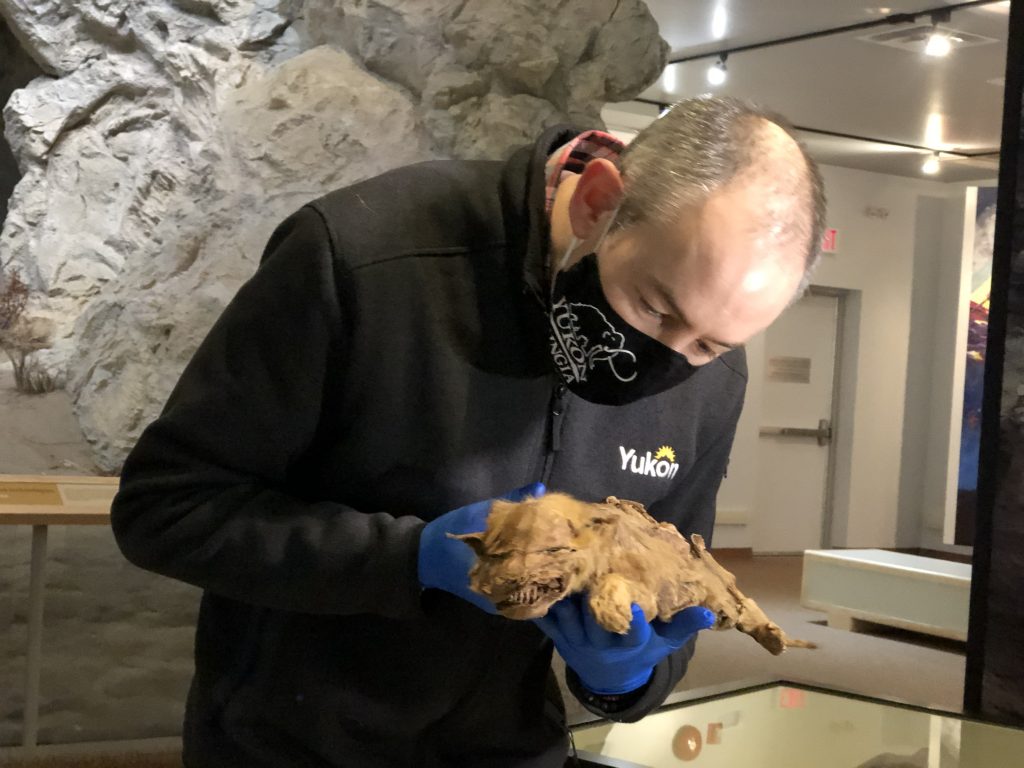
“That side is quite important to us. There is a connection to it. We don’t want it to be just handled in the view of ‘it’s just an artifact,'” Nagano said.
“We really want it to be able to have the respect behind it also. Not in the way it’s respected physically, it also need to be respected spiritually.”
Nagano says Zhùr has also helped develop better relationships between the First Nation and scientists, and also with the government and the mining community.
“This wolf pup is bringing us together in a good way, that we can all learn from it. That part is a good way to be thankful for this wolf pup.”
Rare find
For their part, the scientists are also grateful to the placer miner who first discovered Zhùr, in 2016.
Neil Loveless came across the animal thawing out of the permafrost.
“I just saw this thing that didn’t quite look right,” he recalled. “I picked it up and to be honest, I thought maybe it was like an old, like a puppy or something … that had fallen down the mine shaft.”
He put the remains in a gold pan and later in a freezer until a paleontologist arrived to have a look.
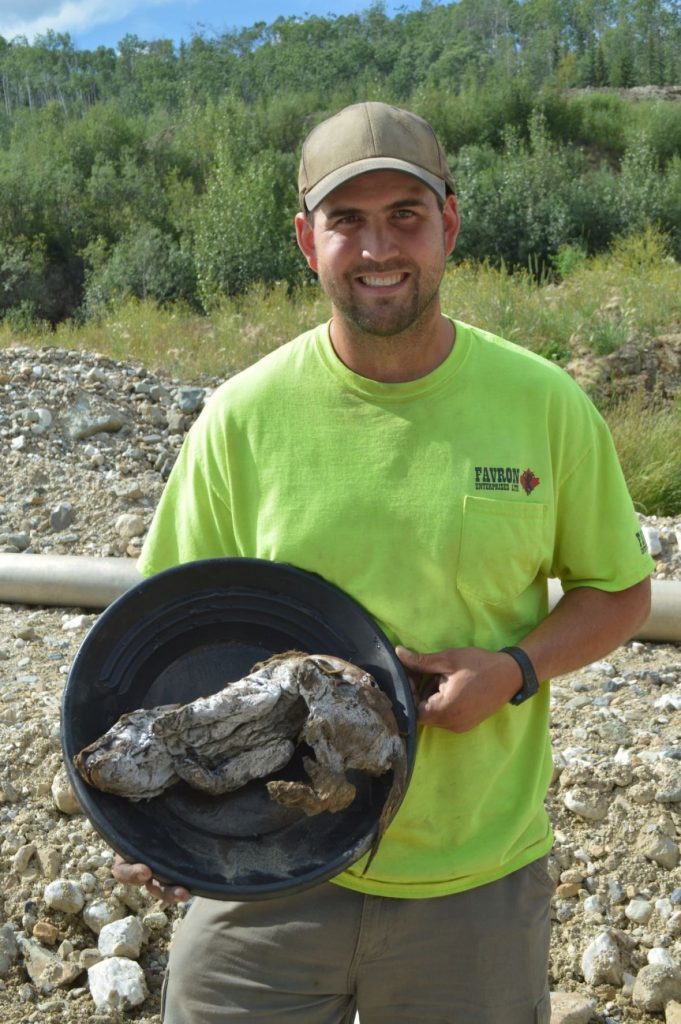
The scientists say it’s that kind of collaboration with the mining community that makes their research possible.
Ice-age remains are commonly dug out of the permafrost in Yukon — bones of mammoths, bison and horses — but a complete specimen like Zhùr is very rare, at least for now.
Julie Meachen hopes there may be more to find.
“As global warming continues to thaw the permafrost, one silver lining is that other exceptionally-preserved frozen mummies will likely be discovered, providing new windows into the past,” she said.
Related stories from around the North:
Canada: Moose on the Mediterranean? Research sheds new light on where moose once roamed, CBC News
Finland: Miners hunting for metals to battery cars threaten Finland’s Sámi reindeer herders’ homeland, The Independent Barents Observer
Greenland: Oldest Arctic sea ice vanishes twice as fast as rest of region, study shows, Eye on the Arctic
Norway: In Arctic Norway, seabirds build nests out of plastic waste, The Independent Barents Observer
Russia: Mass vaccination is underway on Russia’s Yamal tundra, The Independent Barents Observer
Sweden: Warnings in Sweden about dangerous bacteria in Baltic Sea, Radio Sweden
United States: An Alaska volcano and DNA reveal the timing of bison’s arrival in North America, Alaska Dispatch News




hi cheryl – thank you for covering this story. it is so important that canadians know and understand what is happening in our country. looking forward to reading an update on Zhur soon. keep the stories coming on global warming and the impact that it is having on the inhabitants of the north. valerie
Very excellent article on wolf pup and following articles also keep up the amazing work. Thanks